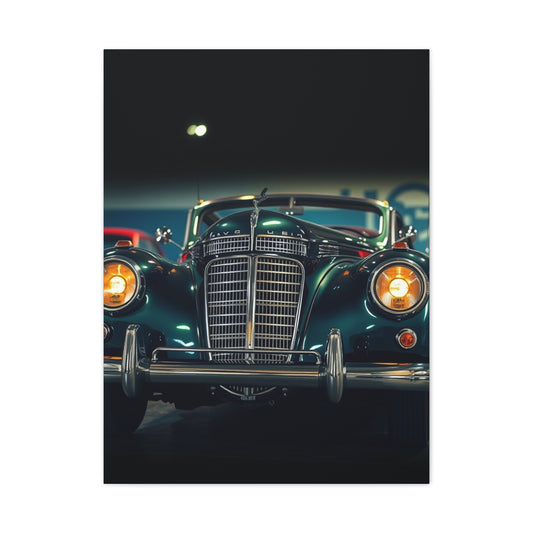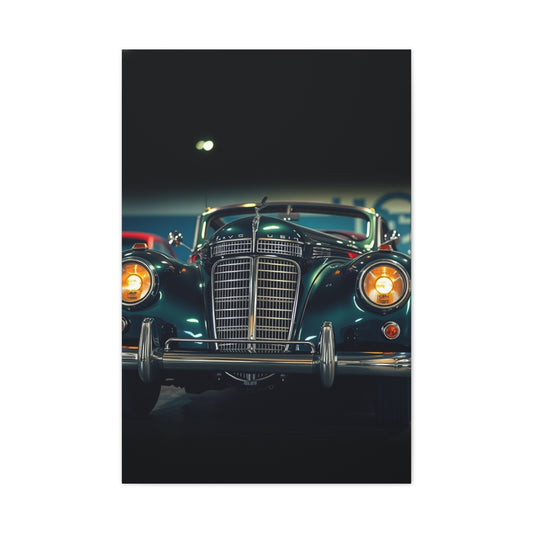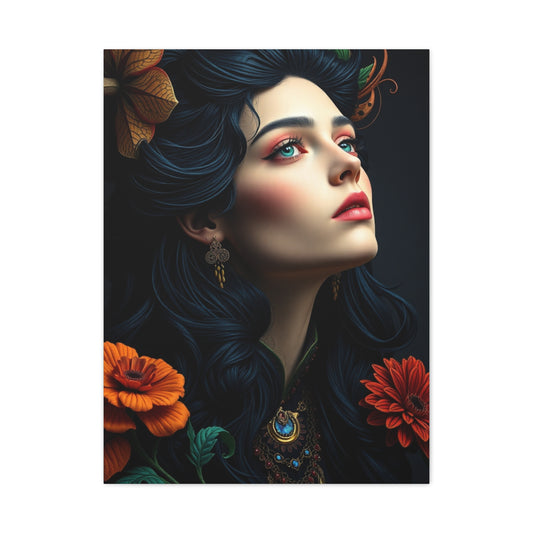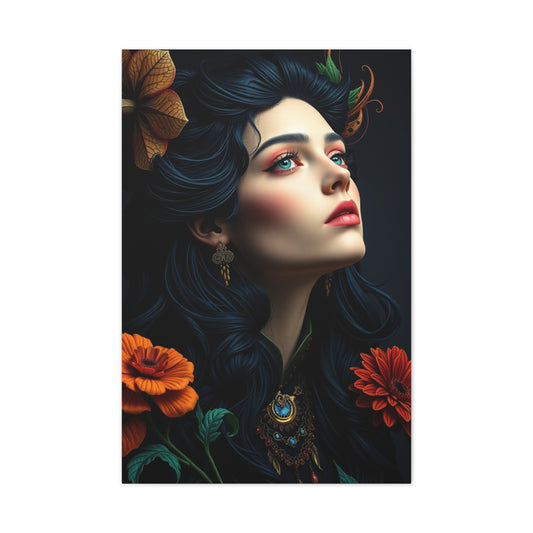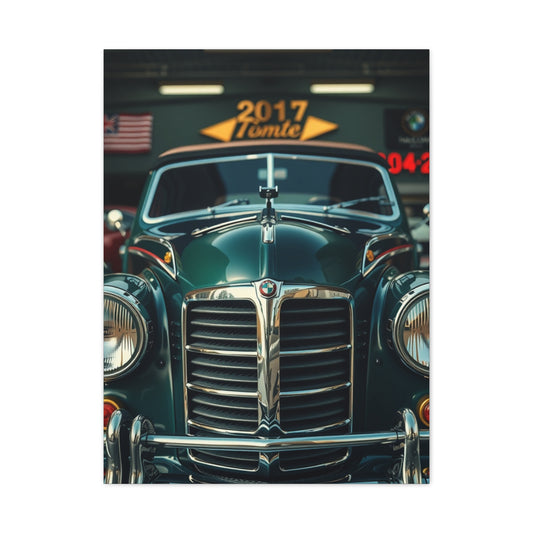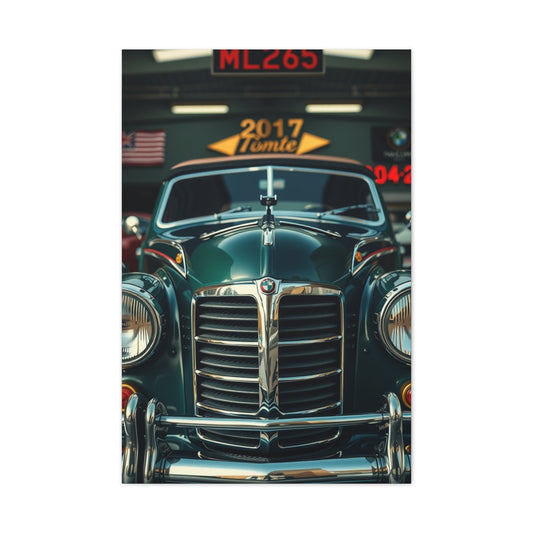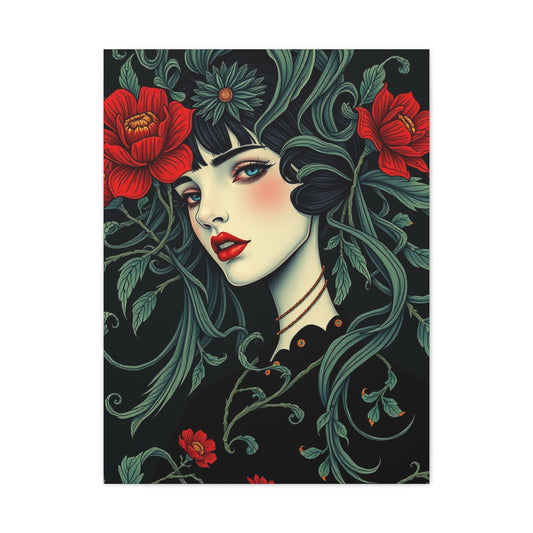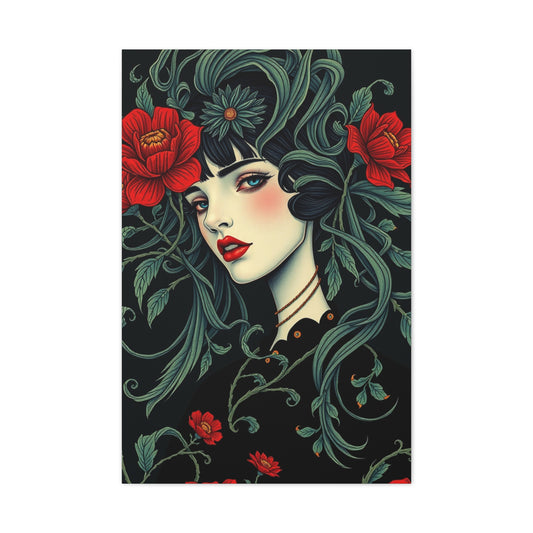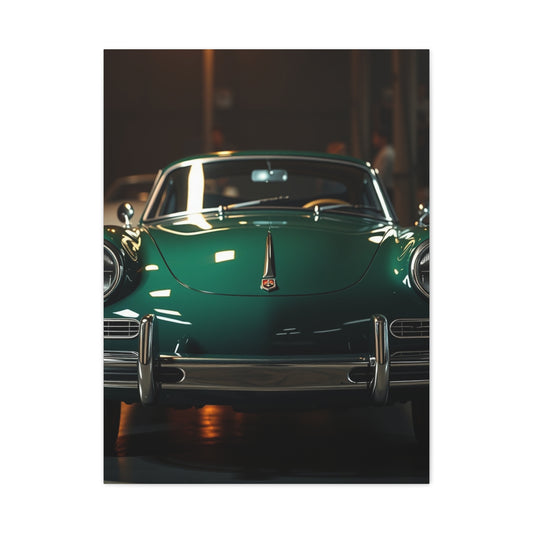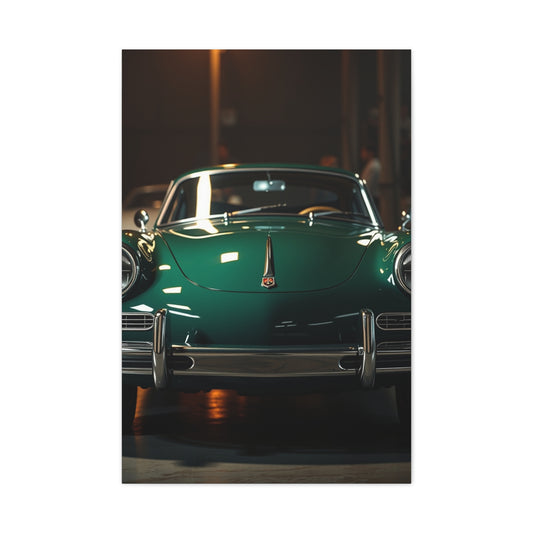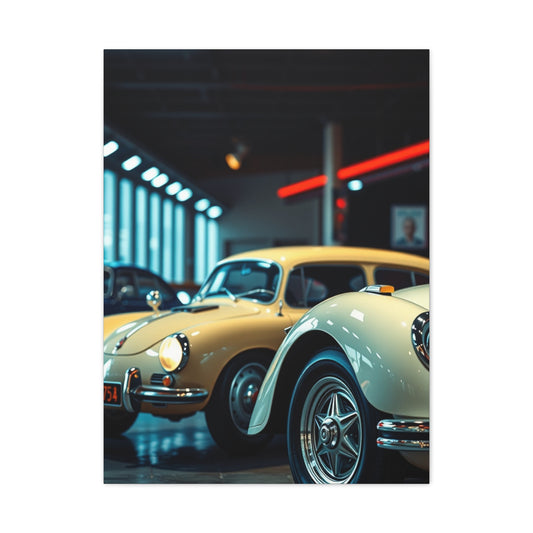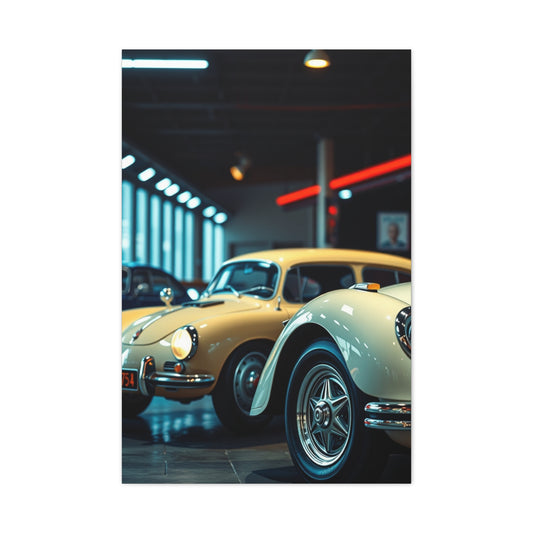Bathroom wall art is a design element that often gets overlooked, yet it holds tremendous potential to transform a simple, functional space into a visually stunning and serene retreat. The bathroom is a space where people begin and end their day, making it a prime location for aesthetic enhancements that elevate mood, create visual interest, and contribute to a sense of relaxation. Despite its utilitarian purpose, a well-decorated bathroom can offer a spa-like experience, combining beauty and function seamlessly. Choosing the right wall art is essential, as bathrooms are uniquely challenging environments due to moisture, humidity, and water splashes.
The importance of bathroom wall art extends beyond mere decoration. Art can define the atmosphere of the room, impart personality, and even influence emotions. Bright, vibrant prints or abstract art can energize and motivate during morning routines, while soft, muted landscapes or calming illustrations can provide a sense of peace and relaxation in the evening. The visual impact of artwork can also alter the perception of space; strategically placed pieces can make a small bathroom feel more expansive or draw attention to focal points like mirrors, vanities, or architectural features. In essence, wall art allows homeowners to infuse their personal style into a room that is often neglected in design planning.
Material selection is critical for bathroom art due to exposure to humidity, steam, and occasional water splashes. Not all artworks are suitable for such environments, and delicate or unprotected pieces can warp, fade, or develop mold. Therefore, durability and resistance to moisture are key considerations. Prints on acid-free paper, canvas with sealed backings, ceramic plaques, glass, metal sculptures, and moisture-resistant wall decals are all excellent options. These materials ensure longevity while allowing homeowners to explore diverse styles, ranging from contemporary abstracts and photographic prints to tropical themes and whimsical illustrations. The combination of material choice and creative design ensures that the artwork withstands environmental challenges while enhancing the bathroom's aesthetic appeal.
In addition to material considerations, the framing of wall art plays a significant role in both protection and visual impact. Frames provide structural support, prevent warping, and shield the artwork from splashes or humidity. Metal frames, such as aluminum or stainless steel, resist corrosion, while plastic or polycarbonate options offer lightweight durability. Glass or acrylic covers protect prints while maintaining clarity, and sealed backings prevent moisture from damaging the artwork. Beyond protection, frames also contribute to the overall design by complementing bathroom fixtures, cabinetry, and lighting. A thoughtfully chosen frame can unify the space, creating a harmonious look that balances artwork with other design elements.
Placement is another crucial aspect of bathroom wall art. Art should be positioned where it can be appreciated without being directly exposed to water, such as beside mirrors, above towel bars, or on walls away from showers and bathtubs. Eye-level placement is ideal, typically around 57 to 60 inches from the floor to the center of the artwork, ensuring a comfortable viewing experience. When placing art above furniture like vanities or cabinets, allow for a gap of four to six inches to create visual balance. The size of the artwork should also correspond to the furniture or wall space; it is recommended that the width of the art be approximately two-thirds the width of the furniture it complements. Proper placement maximizes visual appeal while maintaining functionality in a space that is frequently used and often compact.
Color and theme selection are critical when integrating wall art into a bathroom. The colors should harmonize with the overall palette, whether it is neutral, monochromatic, or bold and vibrant. For instance, a bathroom with white or pastel tones may benefit from colorful artwork that adds contrast and visual interest, while a darker or more dramatic space may require art in muted or complementary shades to prevent overwhelming the senses. The theme of the artwork should also align with the desired mood of the room—nature-inspired prints evoke calmness, geometric patterns suggest modernity, and abstract or quirky designs can create a playful or energetic atmosphere. Thoughtful color and theme choices ensure that the art contributes to a cohesive and intentional design rather than appearing as an afterthought.
Plants can serve as natural complements to wall art, enhancing the bathroom's overall aesthetic. Many tropical or humidity-loving plants thrive in bathroom environments, such as orchids, ferns, air plants, bamboo, moss, and pothos. These plants not only introduce a splash of greenery but also soften hard lines, add texture, and reinforce a spa-like ambiance. Indoor plants can be displayed on countertops, in hanging planters, or on wall-mounted shelves, creating layers of visual interest that pair beautifully with wall art. Combining greenery with artwork allows for a multi-sensory experience, where visual aesthetics are complemented by the freshness and vibrancy of living elements.
|
Related Catagories: |
Incorporating wall art in the bathroom also requires attention to ventilation. High humidity levels can damage artwork over time, making proper airflow essential. Installing an exhaust fan or ensuring adequate natural ventilation helps maintain a stable environment for both the artwork and the room itself. Even inexpensive or replaceable prints benefit from proper ventilation, prolonging their lifespan and preventing issues such as mold or discoloration. Ensuring that the bathroom is well-ventilated also enhances comfort, keeping the space fresh and maintaining a healthy atmosphere for daily use.
Beyond individual pieces, consider the overall arrangement and composition of the artwork. Grouping multiple small pieces into a gallery-style display or using a large statement piece as a focal point can dramatically influence the room's visual impact. Symmetry, balance, and spacing are key factors that create harmony, ensuring that the art enhances the bathroom's design rather than creating visual chaos. Whether opting for a single bold piece or a curated collection, thoughtful composition adds depth, interest, and personality to the space.
Bathroom wall art is a versatile and impactful design element that combines functionality, protection, and aesthetic enhancement. By carefully selecting materials resistant to moisture, framing pieces for durability, considering placement and scale, harmonizing color and theme, integrating complementary elements such as plants, and ensuring proper ventilation, homeowners can create a visually appealing and enduring bathroom environment. Wall art adds personality, sets the tone of the room, and transforms a utilitarian space into a sanctuary for relaxation, self-expression, and enjoyment. With strategic planning and creative vision, bathroom wall art can redefine the atmosphere of the space, making it both inviting and inspirational, while reflecting individual style, taste, and thoughtful design.
Choosing the Right Art Style and Material for Bathrooms
Selecting the appropriate art style and material for bathroom wall art is a critical step in creating a visually appealing, functional, and durable design. Unlike other living spaces, bathrooms present unique challenges due to high humidity, frequent water splashes, and fluctuating temperatures. These conditions can compromise delicate materials, distort colors, and reduce the longevity of artwork if unsuitable options are chosen. Therefore, understanding both style and material considerations ensures that wall art complements the bathroom's aesthetic while withstanding environmental challenges.
When it comes to choosing an art style, homeowners must first define the mood and atmosphere they want to achieve. Bathrooms can serve as serene retreats, energizing spaces, or playful corners depending on the desired experience. Minimalist art, characterized by clean lines, geometric shapes, and neutral colors, creates a calming, uncluttered ambiance. This style works well in modern or contemporary bathrooms, emphasizing openness and simplicity. In contrast, vibrant abstracts or colorful prints can inject energy and personality, turning a utilitarian space into a bold statement area. Nature-inspired art, such as botanical prints, seascapes, or forest landscapes, fosters relaxation and enhances the spa-like quality of the bathroom, making daily routines feel more rejuvenating.
Another popular style for bathroom wall art is the gallery arrangement. Grouping multiple smaller pieces into a cohesive display allows homeowners to explore diverse textures, colors, and themes while maintaining visual harmony. For instance, a set of framed black-and-white photographs can create a sophisticated, timeless look, whereas a mix of patterned tiles or illustrations may evoke a playful or eclectic aesthetic. When curating a gallery, balance and symmetry are key. Artworks should be arranged at consistent spacing and aligned thoughtfully to prevent visual clutter. Additionally, using a unifying element such as frame color or thematic coherence ensures that the collection feels intentional and integrated within the bathroom design.
Material selection is equally vital in bathroom art to ensure durability and resistance to moisture. Some traditional options, such as oil paintings, stretched canvases, and unprotected paper prints, may warp, discolor, or develop mold in humid environments. Instead, moisture-resistant materials provide longevity without compromising on aesthetics. High-quality prints on acid-free paper, sealed canvas, or laminated surfaces withstand humidity effectively. Canvas with a waterproof coating retains texture while preventing water damage. Laminated or acrylic-mounted prints offer a sleek, modern appearance and are easy to clean with a damp cloth. For an extra layer of protection, consider framing pieces with moisture-resistant backing and glass or acrylic covers, which shield the artwork from splashes while maintaining visibility and clarity.
Ceramic and glass-based wall art is an excellent choice for bathrooms, combining durability with visual appeal. Ceramic tiles can be painted, glazed, or printed with intricate designs and installed as accent pieces or entire feature walls. Glass artwork adds depth and reflection, amplifying light and creating a sense of spaciousness. Metal sculptures or wall-mounted pieces, particularly those made from stainless steel or aluminum, resist corrosion and maintain structural integrity despite frequent exposure to steam. Additionally, three-dimensional art objects such as resin plaques, textured panels, or sculptural elements provide tactile interest and dimension, elevating the bathroom from a mere functional space to an immersive design experience.
The practicality of wall art should not be overlooked, particularly in smaller bathrooms. Scale and proportion play a crucial role in ensuring that artwork enhances rather than overwhelms the space. Oversized pieces can serve as focal points, drawing attention and creating a sense of grandeur. However, in compact bathrooms, smaller or medium-sized pieces are preferable to maintain visual balance and prevent crowding. Vertical art can enhance the perception of ceiling height, while horizontal arrangements can widen the sense of space. Strategic placement alongside mirrors, vanities, and towel racks ensures that the artwork complements existing elements and integrates seamlessly into the bathroom layout.
Color coordination is another critical factor in selecting bathroom wall art. Artwork should harmonize with the room’s existing color palette, fixtures, and materials. In neutral-toned bathrooms, vibrant or contrasting pieces can provide a striking focal point, while in colorful spaces, art in subdued or complementary tones prevents visual overload. Monochromatic artworks particularly well in modern minimalist bathrooms, creating a sleek and cohesive look, whereas bold patterns or multi-colored prints can infuse character into otherwise understated interiors. Thoughtful use of color in wall art ensures a balanced aesthetic, enhancing the overall design without clashing with other decorative elements.
Functionality and maintenance must also be factored into material and style decisions. Artwork should be easy to clean and resistant to staining. For example, laminated prints, glass, acrylic, or metal surfaces allow for quick wiping without the risk of water damage. Artwork installed near sinks or counters should be protected from splashes, either through strategic placement or protective coatings. For humid bathrooms, proper ventilation is essential to preserve the integrity of materials and prevent mold growth. Using exhaust fans, opening windows, or incorporating moisture-absorbing elements like natural fiber mats can extend the lifespan of bathroom wall art.
Innovative alternatives such as stick-on wall decals, peel-and-stick prints, or waterproof vinyl murals offer creative solutions for renters or those seeking temporary designs. These options are versatile, easy to apply, and remove without damaging walls, allowing frequent style updates and experimentation with trends. They are particularly suitable for bathrooms with fluctuating moisture levels, as they can be installed on tiles, glass, or painted walls with minimal risk of deterioration. By combining these practical alternatives with traditional framed art, homeowners can achieve a layered, dynamic aesthetic that is both flexible and durable.
In addition to decorative appeal, bathroom wall art can serve functional purposes. Mirrors with artistic frames, printed panels with integrated lighting, or tiles featuring subtle guides or markers can enhance utility while maintaining style. Combining beauty and function allows homeowners to maximize limited space, particularly in small bathrooms where every wall serves multiple purposes. Art can also provide visual cues that separate functional zones, such as dry and wet areas, enhancing usability and creating a sense of order.
Personalization is a key consideration in selecting wall art for bathrooms. Unlike living rooms or bedrooms, the bathroom offers a private space to explore bold or unconventional choices. Custom prints, family photos, personal quotes, or DIY artwork can reflect individual tastes and create a more intimate, meaningful environment. Personal touches make the bathroom feel inviting and uniquely tailored, ensuring that the space resonates with the homeowner’s personality while contributing to relaxation and enjoyment.
Finally, the interplay between wall art and other bathroom elements, such as lighting, plants, and storage, enhances both aesthetics and functionality. Wall-mounted plants can frame artwork, backlighting can accentuate textures, and carefully coordinated fixtures can complement the visual theme. By integrating these elements thoughtfully, homeowners create a cohesive design language that ties together color, material, and texture, transforming the bathroom into a sophisticated, visually engaging space.
Choosing the right art style and material for bathroom wall art requires careful consideration of mood, durability, scale, color, and functionality. Minimalist, abstract, nature-inspired, or gallery-style artworks each offer unique advantages depending on the desired atmosphere. Moisture-resistant materials such as laminated prints, sealed canvases, ceramics, glass, and metal ensure longevity, while framing and placement optimize protection and visual appeal. Proper color coordination, scale, and integration with plants, lighting, and fixtures create harmony and enhance the overall experience. By combining thoughtful selection, practical installation, and personal expression, bathroom wall art can transform an ordinary space into a serene, functional, and visually inspiring retreat that reflects both style and individuality.
Placement Strategies and Aesthetic Balance in Bathroom Wall Art
Proper placement of wall art in bathrooms is as crucial as selecting the right style and material. Strategic positioning ensures that the artwork not only enhances the visual appeal of the space but also remains practical and protected from moisture and damage. Achieving aesthetic balance through thoughtful placement creates a harmonious environment where design elements complement each other, improving both the functionality and atmosphere of the bathroom.
One of the first considerations when placing wall art is the scale of the piece in relation to the surrounding fixtures. Oversized artwork can serve as a dramatic focal point, but in small bathrooms, it may overwhelm the space, making it feel cramped. Conversely, very small pieces can get lost against large walls, failing to create a visual impact. A general guideline is to choose artwork that occupies approximately two-thirds of the width of the furniture or wall space it is associated with. For example, a piece hung above a vanity should be slightly narrower than the counter to maintain balance and proportion. Similarly, if placing art above a bathtub, it should be sized to create visual interest without overpowering the area.
Height is another key factor in placement. Artwork is typically hung at eye level, around 57 to 60 inches from the floor to the center of the piece. In bathrooms, adjustments may be needed depending on furniture height or wall space constraints. For instance, if hanging a piece above a sink or vanity, maintaining a clearance of 4 to 6 inches above the top of the fixture ensures that the artwork is clearly visible while remaining safely above splashes. For multiple pieces arranged as a gallery, keeping consistent spacing between frames, typically 2 to 4 inches, creates a cohesive, organized look.
Bathrooms often have limited wall space due to mirrors, cabinets, and plumbing. Identifying empty areas where art can be displayed without interfering with functionality is essential. Ideal spots include the wall beside the vanity, above the towel bar, above the toilet, or on any blank wall outside the shower stall. These areas allow the artwork to be appreciated without being exposed to constant moisture or direct splashes. Avoid placing unprotected art inside shower enclosures or directly above tubs, as the combination of water and steam can damage materials over time.
Grouping and layering wall art can enhance aesthetic balance. Arranging multiple smaller pieces in a grid, linear, or salon-style layout creates rhythm and visual interest. A set of framed photographs or prints can be spaced evenly along a wall, producing a harmonious display that draws the eye naturally around the room. Combining different media, such as prints, tiles, or three-dimensional sculptures, adds depth and texture. However, careful consideration is needed to avoid visual clutter; all pieces should share a unifying element, such as color, frame style, or theme, to maintain a cohesive appearance.
Integrating wall art with other bathroom elements strengthens visual balance. Mirrors, for example, can be complemented with adjacent art pieces that enhance the reflection or color palette. Lighting plays a crucial role, as appropriate illumination highlights textures, colors, and details. Wall-mounted sconces, recessed lighting, or backlit panels can accentuate artwork without creating glare. The interplay of natural and artificial light ensures that each piece is presented optimally throughout the day. In bathrooms with limited natural light, selecting bright or reflective materials for wall art enhances the perception of space and brightness.
The relationship between wall art and surrounding décor contributes to a balanced aesthetic. Artwork should coordinate with cabinetry, tiles, countertops, and fixtures in terms of color, material, and style. For example, minimalist black-and-white prints complement modern, sleek bathrooms, whereas colorful or patterned pieces enhance eclectic or bohemian interiors. Contrasting textures, such as a smooth glass piece against rough tile or a metallic sculpture on a painted wall, create a dynamic visual experience. Placement strategies must consider these interactions to maintain cohesion across all design elements.
Plants and greenery can also influence wall art placement. Low-light, humidity-tolerant plants such as orchids, ferns, bamboo, and pothos can be positioned near artwork to enhance the spa-like feel of the bathroom. Hanging planters, countertop pots, or wall-mounted planters provide vertical layers that frame art pieces and create visual depth. By integrating living elements, homeowners can establish a connection between natural textures and artistic elements, enriching the sensory experience of the space.
Functional considerations influence placement as well. Artwork should not obstruct bathroom tasks, such as handwashing, grooming, or accessing storage. Placing art too close to faucets, soap dispensers, or towel racks can expose it to splashes or daily wear. Additionally, wall art should not interfere with ventilation systems, lighting fixtures, or mirrors, as these elements are essential for comfort and utility. Ensuring adequate spacing and alignment enhances both practicality and aesthetics.
In bathrooms with high ceilings, vertical arrangements or taller pieces draw the eye upward, creating a sense of height and spaciousness. Conversely, in rooms with low ceilings, horizontal art or gallery arrangements expand the visual width of the walls. Balancing vertical and horizontal elements prevents the space from feeling disproportionate and ensures that wall art contributes to a sense of harmony.
Another strategy involves creating a focal point with wall art. In minimalist or neutral bathrooms, a single striking piece, such as a bold abstract print or a textured metal sculpture, can define the visual character of the space. Complementary, smaller pieces can be added nearby to maintain visual interest without overwhelming the room. In more eclectic designs, distributing multiple pieces evenly around the room fosters a dynamic, immersive environment where each element contributes to the overall aesthetic.
Maintenance considerations also influence placement decisions. Art should be accessible for cleaning and occasional repositioning. Avoid placing heavy or fragile pieces in areas where frequent contact or accidental bumps could occur. Using moisture-resistant frames, laminates, or sealants ensures longevity even in locations that are occasionally exposed to humidity. Properly positioned wall art is not only visually appealing but also practical, retaining its beauty over time with minimal maintenance.
Color balance is a subtle yet important aspect of placement. Artwork should either complement the bathroom’s existing palette or provide a deliberate contrast to draw attention. For instance, in a monochromatic bathroom, a brightly colored print can serve as a statement piece. Conversely, neutral-toned art harmonizes with vibrant tiles, fixtures, or cabinetry, maintaining a serene atmosphere. Strategic placement ensures that color interacts effectively with lighting and surrounding materials, creating a cohesive visual narrative.
Personalization and thematic cohesion are enhanced through thoughtful placement. Grouping art around a particular theme—such as coastal, botanical, abstract, or geometric—provides continuity. Repetition of color tones, motifs, or textures across different walls or areas unifies the design. Placing themed artwork near complementary features, like shell-inspired prints near a beach-style tub or floral illustrations near plant arrangements, reinforces the bathroom’s stylistic identity.
Finally, bathroom wall art placement should consider user experience. Artwork should be positioned to be appreciated during daily routines without obstructing functionality. For example, art near the sink or vanity can provide visual interest during grooming, while pieces above the toilet or towel bars enhance otherwise overlooked spaces. Incorporating art in zones that naturally draw attention ensures that the bathroom feels thoughtfully curated and visually engaging at every glance.
Placement strategies and aesthetic balance are fundamental to achieving a harmonious and functional bathroom environment. Considering scale, height, spacing, surrounding elements, lighting, color, and user interaction ensures that wall art enhances both visual appeal and practicality. Thoughtful arrangements, whether through single focal pieces, gallery walls, or layered elements, create a cohesive, inviting, and visually stimulating space. By integrating functional, aesthetic, and personal considerations into wall art placement, homeowners can transform bathrooms into stylish retreats that reflect taste, creativity, and attention to detail, turning even a utilitarian space into a sanctuary of design excellence.
Maintenance and Longevity of Bathroom Wall Art
Maintaining bathroom wall art is crucial to preserving its beauty, functionality, and longevity. Unlike other rooms, bathrooms present unique challenges due to high humidity, frequent water splashes, temperature fluctuations, and occasional chemical exposure from cleaning products. Without proper care, wall art can warp, fade, or become damaged, undermining both aesthetics and investment. Effective maintenance strategies ensure that bathroom artwork remains a vibrant, integral part of the space while continuing to enhance the overall design.
Understanding the environmental challenges is the first step in planning for longevity. Bathrooms are inherently humid spaces because of showers, baths, and sinks. This humidity can cause paper-based artwork to curl or swell, frames to warp, and colors to fade. Steam may also promote mold or mildew growth on porous surfaces. Temperature fluctuations from hot showers followed by cooler periods can exacerbate these effects, particularly in smaller, poorly ventilated bathrooms. Homeowners must assess their bathroom’s ventilation and moisture control capabilities before selecting wall art and determining its placement.
Choosing the right materials is essential for longevity. Moisture-resistant prints, laminated surfaces, or canvas coated with protective sealants withstand humidity better than untreated paper or fabric. Metal, ceramic, glass, or acrylic sculptures and plaques are ideal for bathrooms as they are durable and less susceptible to moisture damage. Frames made from aluminum, stainless steel, or sealed polyfiber resist warping and corrosion, ensuring that the artwork remains stable over time. Avoid unframed pieces, untreated wood, or delicate oil paintings that cannot tolerate moisture or temperature shifts.
Ventilation plays a pivotal role in maintaining wall art. Bathrooms with windows, exhaust fans, or dehumidifiers experience less condensation, reducing the risk of mold and water damage. For bathrooms without natural ventilation, installing a high-quality exhaust fan or using portable dehumidifiers can create a more controlled environment. Positioning artwork away from direct sources of steam, such as showers or tubs, further protects it. A well-ventilated bathroom not only preserves the art but also contributes to overall hygiene and comfort.
Regular cleaning is necessary to prevent dust, grime, and moisture accumulation, which can degrade wall art. Use soft, lint-free cloths for dusting and avoid abrasive cleaners or chemicals that could damage surfaces. For framed prints or glass-protected pieces, gentle wiping with a damp microfiber cloth is usually sufficient. Avoid excessive water or liquid sprays directly on the artwork, as moisture can seep into the frame and damage the image. In the case of metal or ceramic pieces, mild soapy water followed by thorough drying ensures cleanliness without compromising structural integrity.
Protective coatings can extend the life of bathroom wall art. Acid-free sealants, UV-resistant sprays, or clear varnishes applied to prints and canvases prevent fading, discoloration, and moisture damage. These coatings create a barrier that reduces the risk of warping, staining, or mold development. When using such treatments, it is important to follow the manufacturer's instructions to ensure compatibility with the artwork’s material. Reapplication may be necessary periodically, depending on humidity levels and exposure to light.
Proper hanging techniques also affect durability. Art should be securely fastened to walls using appropriate hardware for the weight and material of the piece. For heavier sculptures or framed prints, wall anchors, screws, or brackets provide stability and reduce the risk of falling or tilting. Ensure that hooks, nails, or brackets are resistant to rust and corrosion, particularly in high-humidity bathrooms. Mounting at a safe distance from water sources also protects artwork from accidental splashes and minimizes the need for frequent cleaning or repairs.
Lighting can indirectly impact longevity. Direct exposure to sunlight or intense artificial light can fade colors over time, especially on paper-based prints. Using diffused lighting, LED panels, or backlighting with low UV emission preserves color vibrancy while highlighting the art. Adjustable lighting solutions allow homeowners to balance illumination for aesthetics and task purposes while minimizing potential damage from prolonged exposure to heat or light.
Strategic placement contributes to long-term maintenance. Avoid positioning art where water, soap, or cleaning sprays are likely to contact it. Keep pieces away from high-traffic areas or locations prone to accidental bumps or scratches. Horizontal surfaces, ledges, and shelves near sinks or tubs are less ideal unless protected by glass or acrylic covers. Positioning art in low-risk areas reduces the frequency of cleaning and the likelihood of damage, extending its usable life.
Rotation and rest periods for artwork can further enhance longevity. In highly humid bathrooms, periodically moving prints or smaller pieces to less exposed areas allows them to dry fully and avoid prolonged exposure to moisture. This strategy is particularly effective for delicate paper prints, canvases, or temporary wall decals. Alternating art pieces seasonally or during periods of high bathroom use ensures that no single piece suffers prolonged environmental stress.
Preventive maintenance is also vital. Inspect artwork regularly for early signs of damage, such as discoloration, curling edges, or mold spots. Address minor issues immediately to prevent escalation. For example, small mold patches on frames can be wiped with a mild cleaning solution, while curling edges on prints can be flattened by gentle pressing under a weighted surface for short periods. Early intervention helps preserve the aesthetic and structural integrity of the artwork.
Integration with other bathroom elements supports longevity. For instance, using glass or acrylic frames creates a protective barrier against moisture and dust. Combining artwork with cabinetry or shelves ensures that pieces are shielded from splashes while remaining visually accessible. In bathrooms with backlit mirrors or accent lighting, ensure that electrical components do not generate heat that could damage nearby artwork. Thoughtful design integration reduces risk factors and enhances both appearance and functionality.
Choosing artwork appropriate for bathroom conditions minimizes maintenance demands. Select materials that are inherently resistant to humidity, temperature fluctuations, and exposure to water. Prints designed for high-moisture environments, metal or ceramic sculptures, or sealed glass pieces provide aesthetic value without extensive upkeep. Coupled with strategic placement, proper framing, ventilation, cleaning, and protective measures, these selections ensure that bathroom wall art remains a lasting, beautiful element of interior design.
Maintaining bathroom wall art requires careful consideration of environmental challenges, material choices, ventilation, cleaning, protective measures, placement, and lighting. By understanding the specific risks associated with bathrooms and implementing preventive strategies, homeowners can ensure that their wall art retains its aesthetic appeal and functional integrity over time. Strategic integration of durable materials, moisture-resistant frames, proper mounting techniques, and routine inspection allows artwork to thrive in high-humidity environments. Additionally, leveraging lighting and decor coordination enhances both visual impact and longevity. Thoughtful maintenance not only preserves the beauty and functionality of bathroom wall art but also contributes to a cohesive, stylish, and enjoyable bathroom space that can be admired daily. With these practices, homeowners can enjoy vibrant, long-lasting wall art that complements their interior design and transforms the bathroom into a personal sanctuary that balances style, comfort, and durability.
Styling and Accessorizing Bathroom Wall Art
Styling and accessorizing bathroom wall art is an essential aspect of creating a visually appealing and cohesive bathroom interior. While functional elements like sinks, mirrors, and tiles dominate the space, wall art adds personality, depth, and aesthetic balance. Thoughtful styling ensures that the artwork complements the overall design theme while enhancing the ambiance, making the bathroom not only a functional space but also a retreat for relaxation and rejuvenation.
Choosing complementary accessories is a critical first step in styling wall art. Accessories should enhance the artwork without overwhelming the space. Items like decorative vases, small sculptures, candle holders, and plants create layers of interest around the wall art. For instance, placing a small ceramic vase or a minimalist sculpture on a floating shelf near the artwork draws attention to the piece while adding a tactile dimension. Accessories should reflect the bathroom’s color palette, texture scheme, and style, whether it is contemporary, rustic, or minimalist.
Layering is a powerful design technique when styling wall art. Instead of a single piece dominating a blank wall, multiple smaller elements can create a curated gallery effect. Combining framed prints with three-dimensional objects like metal or wooden plaques introduces variety and visual depth. For example, a set of three small botanical prints above a towel rack can be paired with a hanging air plant or a small ceramic figurine on an adjacent shelf. Layering allows homeowners to express creativity while maintaining cohesion with the bathroom’s design elements.
The placement of accessories relative to wall art is crucial. Accessories should not obstruct or compete with the artwork; rather, they should guide the viewer’s eye and create a balanced composition. For example, placing a small floating shelf slightly below the artwork provides space for decorative items without blocking the view. Similarly, hanging pendant lights or installing sconces around artwork can highlight its features, adding dramatic emphasis. Proper alignment and proportion ensure that the art remains the focal point while the accessories enhance its presence.
Color coordination plays a significant role in styling. Accessories should complement the hues of the wall art and other bathroom elements such as tiles, cabinetry, and fixtures. Neutral-toned accessories can provide subtle support for vibrant artwork, while metallic accents like brushed brass or matte black can create visual contrast and a touch of luxury. Coordinating textures—such as ceramic, wood, metal, and glass—adds richness to the composition, creating a multi-dimensional and engaging visual experience.
Integrating functional elements as decor accessories is both practical and stylish. Items like soap dispensers, toothbrush holders, and towel hooks can double as design elements if chosen carefully. For instance, a metallic soap dispenser that matches the frame of a nearby wall art piece creates a harmonious connection. Floating shelves or cabinetry with clean lines can serve as display platforms for small art pieces or decorative items, blending utility with aesthetics. This approach ensures that the bathroom remains organized and stylish simultaneously.
Plants are indispensable in styling bathroom wall art. They introduce color, texture, and life into the space, complementing artwork and softening hard surfaces. Low-maintenance, humidity-tolerant plants such as orchids, ferns, or pothos thrive in bathrooms while enhancing the artistic display. Hanging planters, wall-mounted pots, or small tabletop plants on shelves near the artwork create a sense of harmony and natural serenity. The greenery balances the visual weight of framed prints or sculptures and contributes to a spa-like ambiance.
Lighting is an accessory in its own right and has a transformative impact on wall art. Proper illumination enhances colors, reveals textures, and draws attention to key elements. Adjustable LED spotlights, sconces, or pendant lights can be positioned to highlight specific artwork without causing glare. Backlit mirrors or integrated strip lighting can also create subtle illumination that emphasizes surrounding wall art. Strategic lighting ensures that the artwork becomes a focal point, enhancing its impact while improving the overall mood of the bathroom.
Themed styling is another effective strategy. Selecting accessories that echo the theme of the artwork—such as coastal motifs, botanical prints, or geometric patterns—creates a cohesive narrative. For example, a marine-themed print can be complemented by seashell sculptures, coral-inspired objects, and blue or sandy-toned accessories. Thematic consistency helps unify the space, making the bathroom feel curated, intentional, and visually harmonious.
|
Related Catagories: |
Mixing materials is a subtle yet impactful way to elevate wall art styling. Combining glass, metal, ceramic, wood, or resin accessories adds texture, depth, and tactile interest to the display. For example, pairing a sleek metal-framed abstract print with a wooden shelf and ceramic vase creates contrast that is visually stimulating without being chaotic. Material variety ensures that the wall art becomes part of a richer, more dynamic composition rather than appearing isolated or flat.
Scale and proportion are critical when accessorizing. Oversized accessories can overwhelm small wall art, while tiny accents may get lost next to larger pieces. Maintaining a balance between the size of the artwork and surrounding elements ensures visual harmony. For instance, a medium-sized framed print above a vanity can be complemented by two small potted plants or a candle holder, creating a balanced visual triangle that directs attention to the art.
Seasonal or rotating accessories add freshness to the display. Changing decorative items such as flowers, candles, or small sculptures according to seasons or moods keeps the bathroom feeling dynamic and alive. This approach allows homeowners to experiment with color schemes, textures, and layouts without permanently altering the wall art itself. Seasonal styling also creates a sense of novelty and personal expression within the bathroom space.
Incorporating personal touches enhances the emotional connection with the space. Photographs, mementos, or handmade crafts can be styled alongside professional artwork to make the bathroom feel uniquely personal. When done thoughtfully, these elements contribute to a sense of comfort and belonging while reinforcing the overall design aesthetic. Personalization makes the bathroom a reflection of the homeowner’s personality, elevating the space beyond mere functionality.
Minimalist styling emphasizes restraint and simplicity. In minimalist bathrooms, wall art and accessories are curated to avoid clutter while enhancing visual appeal. A single large print with a simple floating shelf and one or two small complementary accessories can create a refined, serene look. By focusing on quality over quantity, minimalist styling allows the artwork to shine while maintaining a sense of openness and tranquility.
Attention to maintenance and durability of accessories ensures that styling remains practical. Accessories should be easy to clean, resistant to moisture, and appropriate for bathroom conditions. Materials like ceramics, metals, tempered glass, and sealed wood are ideal. Choosing items that withstand humidity and occasional water exposure prevents deterioration and ensures that the curated display remains attractive and functional over time.
Styling and accessorizing bathroom wall art involves a strategic combination of complementary items, thoughtful layering, color and texture coordination, functional integration, thematic consistency, scale consideration, lighting, and personal touches. By selecting moisture-resistant materials, incorporating plants, and using appropriate lighting, homeowners can create a visually compelling and harmonious bathroom environment. Accessories should enhance the artwork, reinforce design themes, and contribute to both aesthetics and practicality. Proper attention to scale, proportion, and placement ensures that wall art remains a focal point while surrounding elements support its visual impact. Seasonal updates, personal touches, and durable materials ensure that the curated display remains fresh, functional, and long-lasting. With careful styling, bathroom wall art transforms the space into a sophisticated, inviting, and visually engaging sanctuary where aesthetics, personality, and functionality coexist seamlessly.
Integration of Bathroom Wall Art
Integrating wall art into a bathroom is both an art and a science, requiring careful consideration of space, materials, functionality, and overall design aesthetics. When done thoughtfully, wall art transforms an ordinary bathroom into a serene, inviting, and visually compelling sanctuary. The final integration process involves selecting the right types of artwork, placing them strategically, coordinating with accessories, and ensuring durability in the face of moisture and humidity. These elements collectively create a bathroom that is not only functional but also a statement of style, personality, and sophistication.
The first step in integrating wall art into the bathroom is choosing the right kind of artwork. Functional considerations such as resistance to humidity, water splashes, and heat should guide material selection. Prints on acid-free paper, canvas prints with sealed backs, metal sculptures, ceramic wall pieces, and glass decor are ideal for the bathroom environment. These options are durable, easy to maintain, and capable of withstanding fluctuating temperatures without warping or deteriorating. Opting for artwork with protective coatings or framing with moisture-resistant materials further ensures longevity and reduces maintenance needs.
Once the type of artwork is decided, strategic placement becomes essential. The bathroom layout should dictate where art is hung or displayed. Areas above vanities, beside mirrors, over towel racks, or on empty walls away from direct water exposure are prime locations. The artwork should be placed at eye level, typically 57-60 inches from the floor to the center of the piece, ensuring optimal visibility and balance. When hanging above furniture like cabinets or vanities, leaving 4-6 inches of space between the top of the furniture and the artwork ensures that the piece does not appear cramped while maintaining proportional harmony. Proper placement amplifies the visual impact of the art and contributes to a cohesive, well-planned interior.
Color coordination plays a significant role in creating a unified bathroom aesthetic. The artwork should complement or contrast harmoniously with existing bathroom elements such as tiles, cabinetry, fixtures, and wall paint. Neutral-toned pieces can soften bold color schemes, while vibrant artwork can act as a focal point against a minimalist or monochrome background. Complementary colors in accessories, like vases, towels, and lighting fixtures, reinforce the design theme and draw attention to the artwork. When integrating multiple pieces, using a consistent color palette helps establish cohesion and balance, avoiding visual clutter or discord.
Lighting is an indispensable component in the final integration of bathroom wall art. Proper illumination accentuates textures, highlights colors, and brings depth to the space. Layered lighting, including ceiling lights, sconces, and focused spotlights, allows homeowners to control mood and functionality simultaneously. Backlit mirrors or integrated LED strips can provide subtle indirect lighting that emphasizes surrounding artwork without glare. Adjustable lighting ensures that both the bathroom’s functional needs and the artistic display are met, creating an environment that is visually pleasing, practical, and adaptable for various times of the day.
Accessorizing around wall art enhances its aesthetic appeal and creates a holistic visual experience. Floating shelves, small sculptures, decorative containers, and indoor plants serve as complementary elements, adding layers of texture, color, and interest. Plants, in particular, bring life and freshness to the bathroom, balancing hard surfaces with organic softness. Low-light, humidity-tolerant plants such as ferns, orchids, pothos, and air plants thrive in bathroom conditions and contribute to a spa-like atmosphere. Thoughtful placement of accessories ensures that they support, rather than overshadow, the artwork, maintaining the focal point while enriching the overall design.
Thematic and stylistic consistency is another key consideration. Whether the bathroom is modern, minimalist, rustic, or eclectic, the wall art should reflect and reinforce the overall design language. For instance, geometric prints or monochrome photographs suit minimalist or contemporary bathrooms, while botanical or coastal prints enhance rustic or tropical-themed spaces. Incorporating thematic coherence between wall art, fixtures, tiles, and accessories ensures that the bathroom feels curated and intentional rather than haphazardly decorated. Themes also guide the selection of textures and materials, from sleek metals to rustic woods or ceramic elements, reinforcing the desired ambiance.
Scaling and proportion are critical for maintaining visual harmony. The size of the artwork should correspond to the dimensions of the wall and surrounding furniture. Oversized pieces can dominate a small bathroom, while tiny pieces may get lost in a large space. When integrating multiple artworks, spacing and alignment should be carefully considered to create rhythm and balance. Techniques such as grouping prints in grids, staggered arrangements, or gallery walls provide structure and coherence. Correct scaling ensures that the artwork enhances, rather than disrupts, the bathroom’s spatial flow.
Durability and maintenance are essential for long-term integration. Bathroom wall art is exposed to moisture, steam, and cleaning agents, making material choice and protective treatments crucial. Selecting moisture-resistant frames, sealed canvases, or washable prints ensures that artwork remains pristine over time. Regular maintenance, such as dusting, wiping with damp cloths, and ensuring proper ventilation, prevents mold growth and extends the life of both the art and the surrounding decor. Integrating wall art with practical considerations ensures that the bathroom remains functional, hygienic, and visually appealing.
Personalization adds emotional depth and meaning to bathroom wall art. Incorporating family photographs, travel mementos, or bespoke prints allows homeowners to imbue their bathrooms with character and individuality. Personalized wall art transforms the bathroom from a purely utilitarian space into a sanctuary that reflects taste, memories, and lifestyle. This approach encourages creativity and expression while reinforcing the sense of ownership and comfort within the space.
Finally, integration involves creating a balance between aesthetics and functionality. Artwork should not obstruct functional elements or interfere with daily routines. For example, avoiding placement in direct contact with water sources like showers or sinks prevents damage while maintaining usability. Similarly, ensuring sufficient clearance around vanities, mirrors, and storage areas preserves practical efficiency. When visual appeal and functionality coexist seamlessly, the bathroom achieves a harmonious equilibrium that elevates the experience of the space. The thoughtful integration of wall art into bathrooms requires a comprehensive and holistic approach, taking into account multiple design and practical considerations to achieve a space that is both visually captivating and functionally efficient. While bathrooms are often perceived primarily as utilitarian spaces focused on hygiene and daily routines, they hold tremendous potential for personal expression, relaxation, and aesthetic enrichment. By carefully addressing factors such as material selection, strategic placement, color coordination, lighting, accessorizing, thematic consistency, scaling, durability, and personalization, homeowners can elevate their bathrooms from mere functional rooms into sophisticated, curated retreats that reflect individuality and style.
Material selection is the first and perhaps most critical consideration when introducing wall art into bathrooms. Unlike other interior spaces, bathrooms are subject to constant moisture, steam, and temperature fluctuations. Traditional paper-based artworks or unprotected canvases may warp, discolor, or develop mold in such environments, leading to both aesthetic and hygienic issues. Therefore, opting for moisture-resistant materials is essential. Prints on acid-free paper enclosed in sealed frames, canvas with protective coatings, ceramic or glass art, metal sculptures, or waterproof wall decals offer excellent alternatives that maintain their visual appeal while withstanding the bathroom’s challenging conditions. Durable frames, preferably in materials like aluminum or polycarbonate, prevent corrosion and degradation over time, ensuring that the artwork remains pristine and long-lasting. Choosing materials that are both functional and visually complementary to the bathroom’s overall decor ensures that the art integrates seamlessly rather than appearing incongruous or out of place.
Strategic placement is equally vital in optimizing both the visibility and impact of bathroom wall art. Unlike larger living spaces, bathrooms often feature compact layouts, with mirrors, sinks, cabinets, and fixtures occupying significant wall areas. Placement should therefore maximize aesthetic impact while maintaining practicality. Eye-level positioning, approximately 57–60 inches from the floor, ensures that single pieces draw immediate attention without straining the viewer’s gaze. When artwork is positioned above furniture such as a vanity or storage cabinet, a spacing of four to six inches above the surface allows for balanced visual proportion and avoids crowding. The width of the artwork should ideally not exceed two-thirds the width of the furniture it complements, maintaining harmony and preventing visual imbalance. Common ideal placements include walls beside the vanity, above towel bars, or on empty walls outside the shower stall. Thoughtful positioning creates a focal point in the bathroom, guiding the eye naturally and enhancing the sense of spatial cohesion.
Color coordination and thematic consistency play an integral role in harmonizing bathroom wall art with the broader interior design. Bathrooms may feature a limited color palette, so art that either complements or provides subtle contrast can dramatically enhance the space. For instance, black-and-white prints create a sleek, modern look in minimalist bathrooms, while vibrant or pastel pieces may enliven more neutral interiors. Harmonizing art with the hues of tiles, cabinetry, fixtures, or accent pieces ensures a cohesive aesthetic and prevents visual discord. Furthermore, selecting artwork aligned with the bathroom’s overarching theme—such as tropical, spa-inspired, modern, or rustic—reinforces the desired ambiance and enhances the narrative of the space. Thematic cohesion ensures that wall art is not merely decorative but also contributes to the bathroom’s overall mood and personality.
Lighting significantly amplifies the impact of wall art in bathrooms, shaping both perception and functionality. Proper illumination enhances textures, highlights colors, and creates an inviting atmosphere. Layered lighting, including ambient, task, and accent lighting, ensures that the art is visible without glare or shadow. For instance, overhead recessed lights or strategically positioned sconces can focus attention on a piece, while backlit mirrors or concealed LED strips add subtle highlights that complement the artwork. Balanced lighting also ensures that the bathroom remains functional for grooming and hygiene while maintaining aesthetic appeal. By integrating lighting thoughtfully, homeowners can make the art a focal point and reinforce the bathroom’s intended ambiance.
Accessorizing further elevates the bathroom’s aesthetic and functional appeal. Complementary elements such as floating shelves, small sculptures, or decorative objects can frame or enhance wall art, adding depth and dimension. Incorporating low-light and humidity-tolerant plants such as orchids, ferns, moss, or pothos introduces a sense of freshness, vitality, and spa-like serenity. Accessories should be carefully curated to avoid clutter while providing visual interest, ensuring that the space remains practical for daily routines. When harmonized with wall art, these elements contribute to a multi-layered, dynamic interior that engages the senses and elevates the user experience.
Scaling and proportion are crucial to ensuring that wall art does not overwhelm or underwhelm the space. Bathrooms often have limited wall surfaces, and oversized or undersized art can disrupt visual balance. Multiple small pieces arranged as a gallery wall can create visual interest without consuming excessive space, while a single statement piece may serve as a focal point in a larger bathroom. Thoughtful scaling ensures that the artwork complements other design elements, including mirrors, cabinetry, and fixtures, creating a visually balanced and aesthetically pleasing composition.
Durability, maintenance, and accessibility are essential to preserving the longevity and appeal of bathroom wall art. Regular cleaning, appropriate ventilation, and moisture-resistant materials prevent mold, discoloration, or warping. Ensuring that art pieces are easy to remove, replace, or reposition simplifies maintenance and allows homeowners to refresh the space periodically. Accessibility considerations also ensure that daily activities, such as using sinks or mirrors, do not inadvertently damage the artwork, maintaining both functionality and aesthetics.
Personalization is the final and most meaningful component in creating impactful bathroom wall art. Choosing prints, photographs, or objects that reflect personal taste, experiences, or memories imbues the bathroom with character and emotional resonance. Custom or bespoke pieces allow homeowners to express their style uniquely, transforming the bathroom from a purely utilitarian space into a sanctuary that mirrors their personality and lifestyle. Personalization fosters a sense of ownership and attachment, enhancing satisfaction and enjoyment of the space.
By carefully addressing material selection, placement, color coordination, lighting, accessorizing, thematic consistency, scaling, durability, and personalization, homeowners can transform bathrooms into visually stunning, cohesive, and functional retreats. Bathroom wall art enhances ambiance, provides visual interest, and elevates the overall interior design, redefining how this often-overlooked space is perceived and experienced. When executed with thoughtful planning, wall art balances aesthetic appeal and practicality, creating an environment that is inviting, stylish, and uniquely personal. Ultimately, wall art in bathrooms becomes more than decoration; it is an integral design feature that enriches daily routines, elevates spatial perception, and transforms the bathroom into a sophisticated and inspiring sanctuary that reflects individuality, creativity, and refined taste.
Conclusion
Bathroom wall art is a transformative element that elevates the aesthetic, emotional, and functional qualities of the space. By carefully selecting moisture-resistant materials, prints, sculptures, or framed artworks, homeowners can ensure durability while expressing personal style. Strategic placement at eye level, above vanities, or on open walls enhances visibility, maintains balance, and complements existing fixtures, mirrors, and cabinetry. Thoughtful color coordination and thematic consistency unify the bathroom’s design, while layered lighting accentuates textures, highlights key features, and creates a versatile ambiance for both relaxation and practical use.
Accessories such as floating shelves, plants, and decorative objects further enrich the environment, adding texture, warmth, and personality without overpowering the focal artwork. Incorporating low-light, humidity-tolerant plants like orchids, ferns, or pothos enhances the spa-like feel, introducing freshness and vitality to the bathroom. Scaling, proportion, and alignment ensure that artwork integrates seamlessly into the space, whether as a single statement piece or as part of a curated gallery wall.
Maintenance and accessibility are key to long-term success. Proper ventilation, moisture-resistant frames, and regular cleaning preserve the integrity of the art while preventing mold or damage. Personalization, such as family photos, bespoke prints, or travel mementos, imbues the bathroom with character, making it a retreat that reflects both lifestyle and taste.
Ultimately, integrating wall art transforms the bathroom from a purely utilitarian area into a visually inspiring, cohesive, and functional sanctuary. When combined with thoughtful design, lighting, and accessories, wall art enhances spatial perception, elevates the overall interior, and creates a serene, stylish environment. A well-curated bathroom becomes more than a place for hygiene—it becomes a personal haven where aesthetics, comfort, and functionality coexist harmoniously, reflecting the homeowner’s personality and elevating daily routines into moments of relaxation and visual pleasure.













